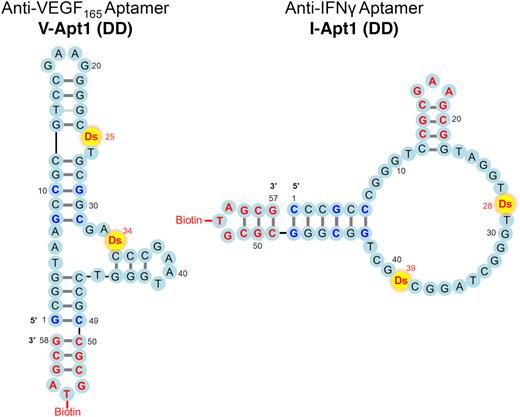Aptamers: Nucleic Acid-Based Molecular Recognition Elements
What are Aptamers?
Aptamers are short, single-stranded oligonucleotides (DNA or RNA) that can bind to specific target molecules with high affinity and specificity. They are engineered through an in vitro selection process called SELEX (Systematic Evolution of Ligands by EXponential enrichment), which allows for the isolation of aptamers with desired binding properties from a large pool of random sequences.

Aptamer Selection Process (SELEX)
The SELEX process involves the following steps:
- Library Preparation: A large library of random oligonucleotide sequences (typically 1014-1015 unique sequences) is synthesized.
- Binding and Separation: The library is incubated with the target molecule, and the bound sequences are separated from the unbound ones.
- Amplification: The bound sequences are amplified by PCR (for DNA) or RT-PCR (for RNA) to enrich the pool with target-specific sequences.
- Iteration: The enriched pool undergoes multiple rounds of binding, separation, and amplification to select for the highest affinity aptamers.
- Sequencing and Characterization: The final enriched pool is sequenced, and individual aptamers are characterized for their binding properties and structure.
Advantages of Aptamers
Aptamers offer several advantages over traditional antibodies
- Chemical Synthesis: Aptamers can be synthesized chemically, ensuring high reproducibility and low batch-to-batch variation.
- Stability: Aptamers are more stable than antibodies, withstanding a wide range of pH, temperature, and organic solvents.
- Modification: Aptamers can be easily modified with various functional groups, enabling their use in diverse applications.
- Small Size: Aptamers are much smaller than antibodies, allowing for better tissue penetration and faster clearance from the body.
- Low Immunogenicity: Aptamers are less likely to trigger an immune response, making them suitable for therapeutic applications.
Applications of Aptamers
Aptamers have found applications in various fields, including:
Diagnostics
Aptamers can be used as molecular recognition elements in diagnostic assays, such as aptamer-based biosensors (aptasensors) and aptamer-based ELISA (ELASA). They offer high sensitivity and specificity in detecting target molecules, such as proteins, small molecules, and even whole cells.
Therapeutics
Aptamers can be used as therapeutic agents, targeting specific disease-related molecules or pathways. For example, the FDA-approved aptamer drug Pegaptanib (Macugen) targets vascular endothelial growth factor (VEGF) for the treatment of age-related macular degeneration.
Drug Delivery
Aptamers can be conjugated to drug molecules or nanoparticles to enable targeted drug delivery. The aptamer directs the drug to the desired tissue or cell type, reducing off-target effects and enhancing therapeutic efficacy.
Imaging
Aptamers can be labeled with fluorescent dyes or radionuclides for molecular imaging applications. They can be used to visualize specific targets in vitro or in vivo, aiding in the diagnosis and monitoring of diseases.
Challenges and Future Perspectives
Despite the numerous advantages and applications of aptamers, some challenges remain. One major challenge is the potential degradation of aptamers by nucleases present in biological fluids. This can be addressed by chemical modifications, such as the incorporation of unnatural nucleotides or the addition of protective groups.
Another challenge is the limited in vivo half-life of aptamers due to rapid renal clearance. This can be overcome by conjugation to polyethylene glycol (PEG) or other molecules that increase the size and stability of the aptamer.
Future research in aptamer technology will focus on expanding the range of targets, improving the selection process, and developing novel aptamer-based therapeutics and diagnostic tools. The integration of aptamers with other technologies, such as nanomaterials and microfluidics, will further enhance their applications in biomedicine and biotechnology.
Further Reading
Nature Reviews Drug Discovery, Aptamers as targeted therapeutics: current potential and challenges
Biomedicine & Pharmacotherapy, Aptamers used for biosensors and targeted therapy
